One of the best ways to filter out nitrates, ammonia, and small bits of debris out of the water in your aquarium is by using a fluidized bed filter. It is a device that either hangs at the back or side of your aquarium or underneath it if you are using a sump.
It forces the water through a fluidized medium, like sand or plastic resin beads, thereby leaving the bad stuff stuck on them, and letting clean water through. If you plan on using this kind of filter, then it is best to get the best pool filter sand for aquariums.
Although you can find several brands that use real and treated sand, most pool filter sand is based on fine silica particles, making them last longer and perform much better, like the Quikrete pool filter sand for aquariums.
During your search for a quality one, you will likely discover that there are many brands of filter sand in the market today. Finding the best one can, therefore, be tough. Here is a quick buying guide and a couple of samples of products so you can get an idea of what you should look out for.
Contents
Best Pool Filter Sand for Aquarium Reviews
1. FairmountSantrol AquaQuartz Filter Sand
I have used a fair number of filter sand for my aquariums at home, and the AquaQuartz is certainly among the top 10 easily. I use hanging fluidized filters and some of them use this sand. Unlike some of the other products that I tested, this one remained suspended and did not clump together.
Another nice thing about Aquaquartz pool filter sand is that it does not discolor the water. I had a few unfortunate experiences with other brands that made the water cloudy even after I rinsed the sand multiple times before putting it in the filter. This product hardly needed rinsing and it kept the water clear.
Another remarkable thing about this product is that it takes very little effort to make it tumble in the fluidized filter. The sand particles are so light that they would suspend themselves in the canister almost immediately after turning on the pump. There is no need to shake nor tap the canister.
I have one tank planted and I used to use aquarium gravel as a substrate for it. When I restarted the tank, I used this pool filter sand for the planted aquarium, and it was many times better than the regular gravel. The plants had no problem taking root. I also noticed that the white color brightened up the tank quite a lot.
Another thing that surprised me about this pool filter sand is that it is all-natural. I have used other natural filter sand, but they were not as clean and easy to use as this one. This is odorless and only needed two rinse cycles before using (it might have needed only one, but I did two just to be safe).
Now, there is one issue with this filter sand. If you use it as a substrate, you might have a problem with it blowing around if you are using a high-flow filter. It might cause the sand to clog up your filter, so you may want to install a pre-filter to prevent it from happening.
- Does not clump up
- Will not discolor the water
- Easy to suspend in a fluidized filter
- Works great as an aquarium substrate
- All-natural and odorless
- A bit too fine for high-flow aquariums
Whether you are using this as a filter medium or a substrate for your aquarium, this product works well for both. Check it out the next time you will be setting up a new tank.
2. HTH 67074 Filter Sand
Although this product is mainly designed as a pool filter media, it also works great as a medium for aquarium filters. HTH did such a great job creating this sand that you can use it for both saltwater and freshwater aquariums. It also works well as an aquarium substrate.
I also used this pool filter sand for aquarium substrate, so I had to rinse it in a bucket of water first before pouring it inside the tank. I was quite surprised at how clear the water was in the first rinse. The second rinse was not really needed but I still did it out of habit.
I also have no complaints about this sand as a filter medium. I use it in a fluidized filter and it works quite well in filtering nitrates, ammonia, and small debris in the water. It kept the water clean and clear for a longer time compared to when I used another one. I only needed to change the water once a month since I started using this product.
This filter also worked great at preventing algae bloom in my aquarium. I used to have a serious problem with algae turning the water and glass of my tank green. The main reason is that the tank gets exposed to an hour or so of sunlight. It is no longer a problem with this filter sand.
In the past, I needed to replace half the tank of water, which is quite tedious because I have several 100-gallon tanks. When I switched to this filter medium, the water can go for several weeks without a partial water change. This pool filter sand is so efficient that I highly recommend it for aquarists.
Here is the problem with this product, though. It only comes in 50-pound bags. This is fine if you will be using it as a substrate, but it is a bit too much if you will only be using it as a filter medium. On the other hand, you will not need to purchase additional filter sand for a year or two.
- Perfectly safe for aquariums
- Easy to clean – It only requires minimal rinsing
- Efficiently filters debris, nitrates, ammonia, etc
- Prevents algae bloom
- Greatly reduces water replacement
- Only comes in 50-pound bags
If you will be using this product as a filter medium, you will have more than a year’s supply. However, if you will be using it as a substrate, then the entire bag might be enough for your tank.
3. Zeo Inc ZeoSand Swimming Pool Sand
Once prepared properly, ZeoSand does work quite well. The manufacturer said that it works twice as well as regular pool sand but I will not go that far. However, I can tell that it is significantly more efficient than regular pool sand when it comes to filtering particulates from the water.
Another neat thing about it is that it is half the density of pool filter sand. This promotes ease in using it in a reactor filter. This pool sand replacement is so light that it does not take much to make it tumble and move around in the reactor. I do not need to shake or tap the filter anymore. I just turn the pump on and the sand already starts tumbling.
The reason why ZeoSand pool filter sand for freshwater aquariums is better than regular pool sand is that each particle has an irregular shape. Looking closely at each particle, they look like jagged crystalline bits. This gives them more surface area where dirt and other impurities in the water stick onto.
Pool sand filters are already pretty efficient, but this product is significantly much better. I have been checking my water conditions religiously since the first time I used this product. I noticed that the water is still clean even when it has been almost a month since I last did a partial water change.
Aside from saving a lot of water, it is also quite an economical product as it can last for up to five years. You just need to give the sand a good washing every month or so. This will somewhat “recharge” the sand and make it work almost like new. You can probably do this around three to five times before you need to replace the sand altogether.
Now, the problem that I have with this is that it can be very tedious to prepare. It is a good thing that I will only be using this product in my reactor filter, and not as a substrate. Even a small amount of ZeoSand takes a lot of time to wash. It took me 7 rinsings to get the water to come clean.
- Twice as effective as sand
- Less dense than sand
- Has more surface area
- Lasts up to five years
- Saves a lot of energy and water
- Requires a lot of backwashing
Although it is a bit more expensive and requires a lot of prep work, ZeoSand does work like a charm. If you will be using this in a fluidized reactor, make sure that you wash it at least 6 times or until the water runs clear; otherwise, it will turn your tank green.
4. HTH 67079 Pool Filter Sand
One thing that makes this product nicer compared to the other pool sand filter media is that it is already pretty clean right out of the bag. When I used it in my aquarium, I only needed to wash it two times. The second washing may not even be needed but I just wanted to be sure.
I was a bit hesitant to use this pool sand as an aquarium substrate for the first time, but it did a good job so far. It settled on the bottom of the tank almost immediately and did not cloud the water even one bit. It also provided better anchoring for my live plants, unlike the loose aquarium gravel I used to use.
Aside from using it as a substrate, I am also using this product as a filter medium in my fluidized bed filter. The sand particles are just the right density that they are easy to make them tumble in the reactor. This makes it different from the other reactor beads and pool sand products.
Because each particle has such a large surface area, it makes them very efficient as a filter medium. More surface area means they can attract more dirt, debris, and all the nasty stuff that floats in the water of your tank. Pool sand is more than twice as efficient at filtering compared to reactor beads.
Because of the highly efficient pool sand as a filter medium, it keeps the water in the aquarium crystal clear for weeks. I have saved so much water and even more of my time by not having to replace the water in my tank as often as I used to. Instead of having to do it weekly, I now need to replace half of the water every month.
I have a word of warning, though, if you plan to use this pool filter sand in the aquarium as a substrate. Because it is lighter than regular aquarium gravel, it might get blown off by your water flow. You might need to dial down the flow a bit to prevent the sand from getting everywhere.
- Already comes pre-washed
- Ideal for aquarium substrate
- Great for fluidized bed filters
- Lots of surface area per particle
- Keeps water clear and clean longer
- Might get blown up in high-flow aquariums
If you will only be using it as a filter medium for your aquarium, then you might be stuck with the 50-pound bag for a while. On the other hand, if you will be using it as an aggregate for your 50-gallon or 100-gallon tank, you will discover that it is the right amount.
5. HARSCO METALS & MINERALS Filter Glass
The thing that I liked the most about this product is that it works significantly better than regular pool sand. This product has particles that have almost twice as much surface area compared to regular pool sand, making it more efficient at filtering even microscopic debris.
From the moment I changed out the filter media in my fluidized bed filter with this product, in less than half an hour, there was a noticeable improvement in the water quality. Not only did the water get a whole lot clearer, but the nitrate and ammonia levels dropped significantly.
As mentioned earlier, this filter medium does more than catching the solid waste floating in the water. It also works great as a natural chemical filter. It helped me get the ammonia level in my goldfish tank under control. It is a safe and completely natural alternative to chemical solutions.
Another reason why this medium is ideal for fluidized bed filters is that it is less dense than sand, which makes them easier to tumble in the reactor. Also, because they move constantly, they are less likely to clump up even when they get a bit dirty.
Speaking of the sand getting dirty, when the medium does get “full” of dirt and impurities, you can “recharge” it by giving it a good rinse under running water until the water runs clear. You can get several uses from one batch of this filter medium, making it quite economical.
Now, if you are thinking that this might make a good aquarium substrate, then you better think again. Note that it might not be a healthy choice of a substrate as these are mostly made of glass, which might rip up the insides of your fish if they were to ingest it, and they will.
- Works better than sand but needs less cleaning
- Makes the water clear 25% faster than sand
- Traps not just solid wastes but also chemicals
- Ideal for fluidized bed reactors
- Can be cleaned and reused several times
- The included scoop is not very precise
It is a shame that this sand does not come in smaller packages. This filter medium works so well that it might not go back to using other products again. With that said, it may be a good thing that you will be getting a 40-pound bag. This way, you will have more than a couple of years’ worth of filter medium.
What to Look For When Buying a Pool Filter Sand for Aquarium
There are so many different options when it comes to pool filter sand that choosing just one can be difficult. And yes, you will be choosing just one because they come in large bags – at least 40 pounds each. This means that unless you want expensive sandbags lying around your home, you need to pick the best right away.
To help make shopping for pool filter sand a bit easier, here are some of the factors that you need to consider:
Filtering Capacity
Almost all pool filter sand is better than most of the other aquarium filter media out there. You will pretty much end up with a good filter medium whichever one you choose. However, you should not just choose filter sand based on how good it is at catching solid debris.
You know you have a good pool filter sand if you notice that you are not scraping algae off the sides of the tank as much as you used to. Pool filter sand is supposed to prevent algae bloom, which is why well-kept swimming pools do not have green water.
Good filter sand should also be able to catch chemical impurities in the water. Your filter should not just be able to keep your aquarium water clear but also remove nitrates, ammonium, chlorine, and other nasty chemical stuff. This will keep the water healthy and your fish happy.
Ease of Use
It is very likely that you will be using the pool filter sand in a bioreactor/fluidized bed filter, so an important thing that you need to consider is the ease through which you can make the sand move in the reactor. Fluidized bed reactors need to have the filter medium moving for them to work.
The pool filter sand should not be so dense that it would just settle at the bottom. It will only cause the filter to clog and the water to stagnate. The sand should also not be so light that it makes the water cloudy. It should be the right density that acts like a fluid when you pump water through it.
With that said, the sand should readily “tumble” when you turn on the water pump. You do not have to help it along by swirling the sand. Also, the sand should not clump together while the filter is working. It will cut its efficiency by quite a lot.
Easy Preparation
One important thing about the pool filter sand that you should know is that you will need to rinse it several times or more before you put it in your aquarium filter. If you pour it in straight from the bag, the dust will mix with the water and turn the tank foggy. Some brands will even discolor the water.
If you do not have that much free time on your hands, get a bag of pre-washed filter sand. These products have most of the sand washed out of them before packaging. However, you should still rinse them one or two times before use just to be on the safe side.
Ideal as an Aquarium Substrate
The great thing about pool filter sand is that most of them are great for use as aquarium substrates. Because of their finer consistency compared to regular aquarium gravel, they provide a more natural-looking surface if that is what you are looking for.
Moreover, if you want to place live plants in your tank, filter sand is a better planting medium as it allows the roots to hold on better. Now, not all filter sand is ideal as an aquarium substrate.
Some use recycled glass as the aggregate material, which means that they will tear up the insides of the fish when they swallow them. It is best to get natural pool filter sand as they are not as jagged as glass.
Lifespan
The nice thing about pool filter sand is that it can last significantly longer compared to other filter media. However, different brands last different lengths of time. It can be hard to simply trust the word of the manufacturer regarding this, so you will need to read through pool filter sand reviews.
See what other customers had to say about the product. If the reviews are mostly negative, then you need to steer clear of that particular product. Now, if you find that the reviews are mostly positive and unique (there might be some shenanigans going on), then you can trust that brand.
Cost
Prices of pool filter sand can widely vary from one brand to the next. It is mainly due to the composition of the filter media. Some brands use all-natural but treated sand while others use other materials like borosilicate crystals, recycled glass and plastics, and sometimes, even resin.
Here is another problem. If you will only be using the filter sand as a filter medium, you will be stuck with a large bag of the stuff for a long time. Pool filter sand typically comes in large 50-pound bags, so if you will not be using the stuff as substrate, I suggest looking for smaller bags if there are any.
Keep in mind that you will only be using around a cup of filter sand in your fluidized bed filter. This means you will be stuck with a large bag of filter sand for quite a long time. If you are lucky and you got a good product on the first try, then you are set for more than a year.
You may have thought that choosing a pool filter sand is going to be easy. It is just sand anyway. However, this product is not as simple as regular sand. They have other qualities that make them the ideal filter medium, which means that ordinary sand will not work.
Frequently Asked Questions
Is pool Filter Sand Safe for Aquariums?
Yes. If used as a filter medium, any kind of pool filter sand is safe for use. However, if you will be using the sand as a substrate material, use only natural or silica sand. You should never use glass media as they are not good for the fish.
How to Clean pool Filter Sand for the Aquarium?
The only time that you will need to clean pool filter sand is the first time that you use it. Ideally, you will need to put the filter sand in a large bucket. After that, you have to rinse it until the water runs clear. This usually takes around 4-5 rinse cycles. However, some pre-rinsed products require only 1-2 times.
Conclusion
Pool filter sand has many different applications, especially if you use it on aquariums. You can use the sand as a filter media for a fluidized bed filter, or if you are setting up a new tank, you can use this product as a substrate to line the bottom.
However, not all pool filter sand media are made equal. They can also be quite expensive. If you want to get the most out of your money while guaranteeing the safety and well-being of your fish, you need to get the best pool filter sand for aquariums that you can find in the market.

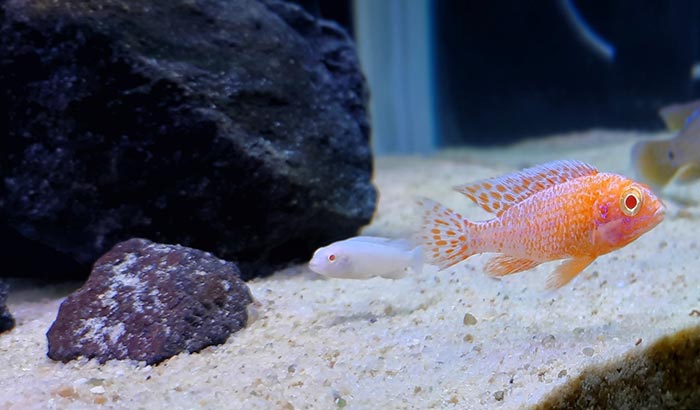
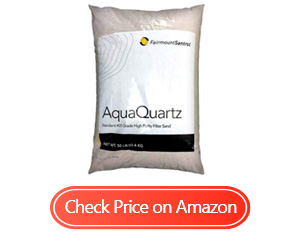
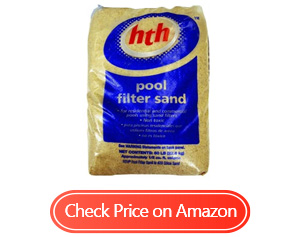
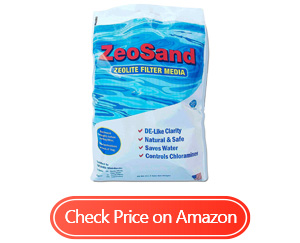
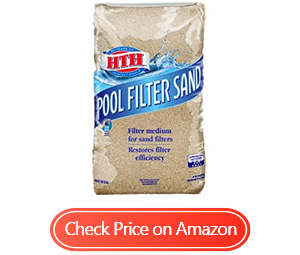
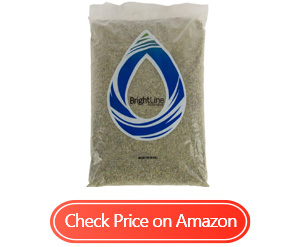
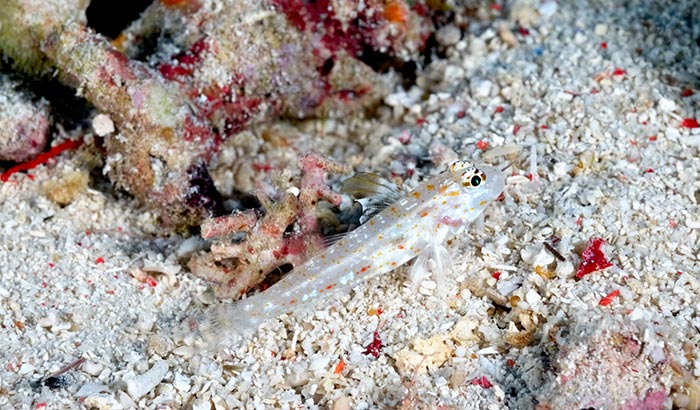
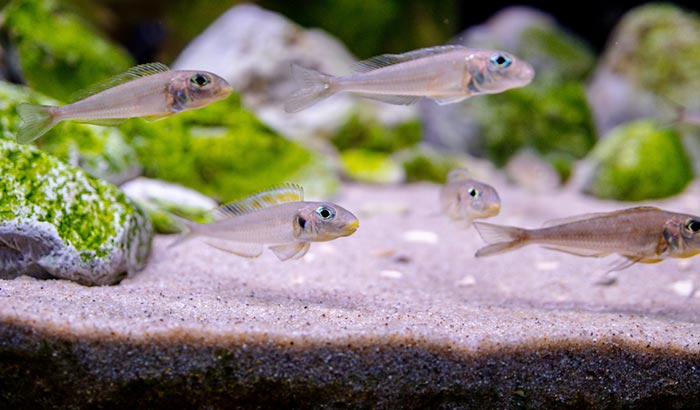
Thank you!!! I have been looking for the right sand for my shrimp tanks. This article helped me tremendously!!